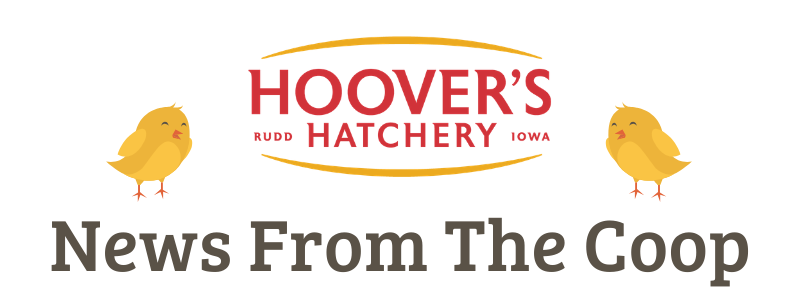A trip to your local feed store may leave you asking more questions about chicken feed than before you visited. What percentage protein should they get? What about calcium? Are my chicks old enough to get a pellet feed? There are many types of chicken feed available and it can leave you scratching your head wondering which is best for your chickens.
There are three main forms of chicken feed: pellets, crumbles and supplements. Pellets and crumbles are complete feeds. In other words, these feeds will meet the entire dietary needs of your chickens. These are intended to replace the entire diet of a chicken that lives in a coop and is not foraging. If your chicken is out in a run or free-ranging, they can still consume this feed as part of their diet. Supplemental feeds include oyster shell or limestone, scratch grains and treats. Our partners at NatureServe Feed make all-in-one chick crumbles and layer pellets to make feeding your chickens easy!

Feed types for different age groups
Chicken feed is generally made for three different age groups: starters, growers and layers.
Starter feed is intended for young chicks and is a crumbled feed. It’s a complete feed in a crumble form. Small chicks physically cannot eat pelleted feed and need a crumble. Chicks grow rapidly during the first few weeks of life. Starter feeds usually have ~20% protein to support the rapid growth of young chicks. Starter feed has a smaller amount of calcium (~1%) and can be medicated to prevent coccidiosis.
Grower feed is intended for chickens that are over about 8 weeks of age but aren’t laying yet. Chickens in this age group are similar to teenagers. They’re mostly finished with rapid growth but they aren’t quite adults yet. They’re still growing, just at a slower pace. The protein in grower feed is usually around 16-18% to support growth. Generally, grower feed has ~1% calcium and can be either medicated or non-medicated. Grower feed is available in either a crumble or a pellet. Occasionally, you may even find a micropellet. At this stage, chickens are able to consume a pellet. Pellets are generally less messy than crumbles. From my experience, if the chickens can be on pellets, it’s much less wasteful and easier on my wallet than feeding crumbles.
Feed for layers is feed intended for adult chickens. It generally has 15-18% protein and a larger amount of calcium to support proper egg shell development in laying hens. As old chickens are less susceptible to coccidiosis, it’s more common to find non-medicated layer feed. You can purchase medicated layer feed though, you may just have to look a little harder to find it. Layer feeds are almost always pellets. They can handle the larger feed size and waste less. I have found layer feeds available in a mash form, which is almost identical to a crumble. Again, I think if the chicken is big enough to eat a pelleted feed, it’s much easier on you if they eat a pellet rather than a crumble.
Wasted feed turns into wasted money. When raising chickens, feed is the biggest cost that you’ll usually have. Prevent wasted feed to save money by using a pelleted feed once the chicks are old enough. Wasted feed also creates unsanitary living conditions. Crumbles that are left behind can get wet and moldy very fast. Mold can cause respiratory problems in chickens. Also, feed left on the ground attracts both rodents and flies. Rodents can carry diseases that can make your flock sick. If you keep your feed nearby, the rodents are more likely to find it and get into it. Avoid the issue by limiting wasted feed and cleaning up any feed left behind.




